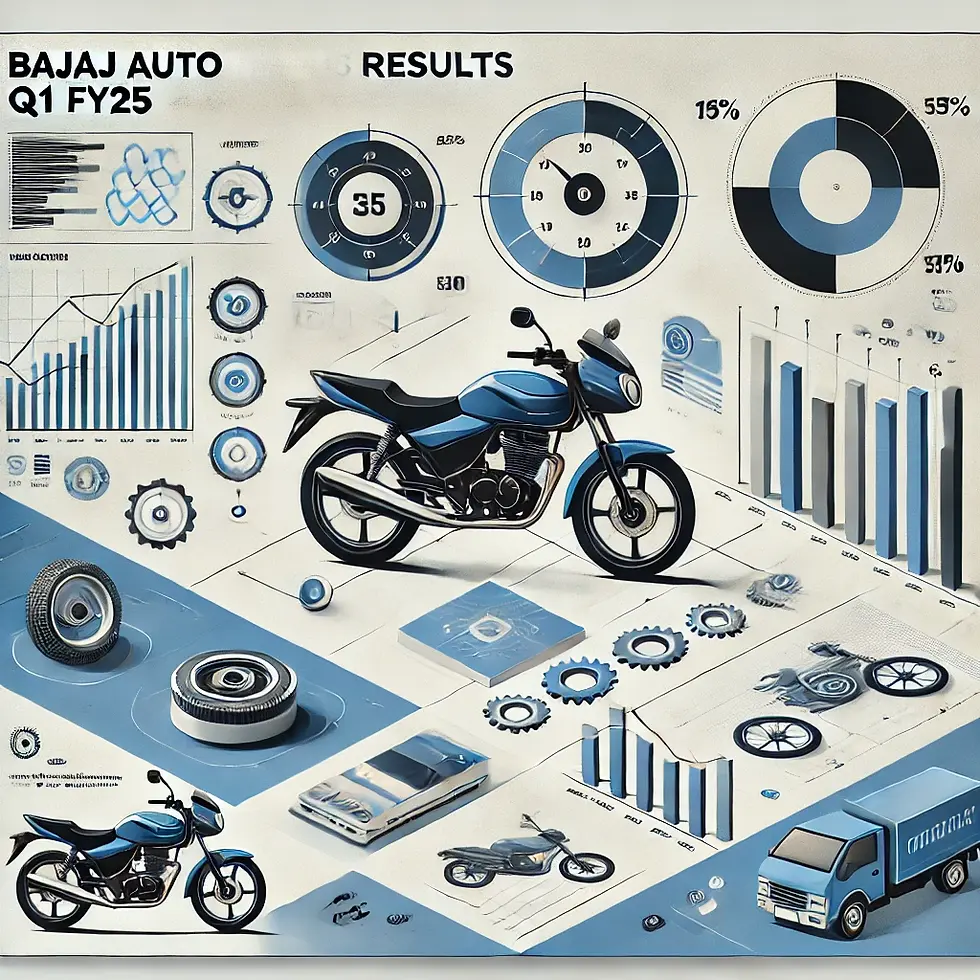What are the key factors influencing Bajaj Auto's recent performance trends
- nvshah0610
- Jul 28
- 2 min read

The recent performance trends of Bajaj Auto are influenced by several key factors spanning market dynamics, strategic initiatives, product innovation, and operational efficiencies:
Strong Product Portfolio and Market Leadership: Bajaj Auto continues to dominate the Indian two- and three-wheeler segments, with especially strong positions in the 125cc+ motorcycle category through models like the Pulsar series. Its commercial vehicles, including the iconic Bajaj RE and Maxima three-wheelers, have captured significant market share (80% in FY2024). The launch and scaling of electric vehicle models (e.g., Chetak EV and electric three-wheelers) have contributed notably to volume growth and future potential.
Export and International Market Growth: Exports form around 30% of Bajaj’s sales, with strong performance in emerging markets like Latin America, Africa, and Southeast Asia, though geopolitical and currency challenges slightly affected export volumes in FY2024. The company aims to increase exports further to 35% by 2025.
Innovation and R&D Investments: Bajaj Auto allocates about 4% of sales to R&D, fueling innovations in premium motorcycles, sports categories, and electric vehicle technologies. This investment supports the launch of new models and aims to maintain competitive advantage in evolving markets.
Operational Efficiency and Cost Management: Bajaj Auto has demonstrated improving profitability margins—gross profit margin rose to around 30.5% and net profit margin to 16.5% in FY 2022-23—reflecting effective cost control, efficient manufacturing, and supply chain management, helping counter raw material cost pressures
Strong Distribution Network and Customer-Centric Strategies: With over 6,000 dealerships and a customer-focused approach, Bajaj is expanding network reach, especially for its electric three-wheelers and premium motorcycle segments. It emphasizes resolving consumer issues and building brand loyalty through product quality and service.
Market and Economic Factors: Bajaj’s performance is influenced by broader economic factors such as GDP growth, inflation, and rural versus urban demand. The company has capitalized on higher demand in the premium bike segments and is adapting to shifting consumer preferences toward fuel efficiency and electric mobility.
Strategic Partnerships and Acquisitions: Collaborations, such as the minority stake in KTM, have boosted international export revenues (20% growth in motorcycle exports cited), and partnerships for EV battery technology enhance Bajaj’s competitive positioning in the electric vehicle space.
To summarize, Bajaj Auto’s recent performance trends are underpinned by its strong market leadership in core segments, strategic export expansions, sustained R&D-driven innovations especially in electric vehicles, effective cost and operational management, and responsive customer engagement amidst evolving economic conditions. These combined factors have supported steady revenue and profitability growth despite some margin pressures and external challenges.
This synthesis is based mainly on FY2023-25 data and recent company reports and financial analyses.



Comments